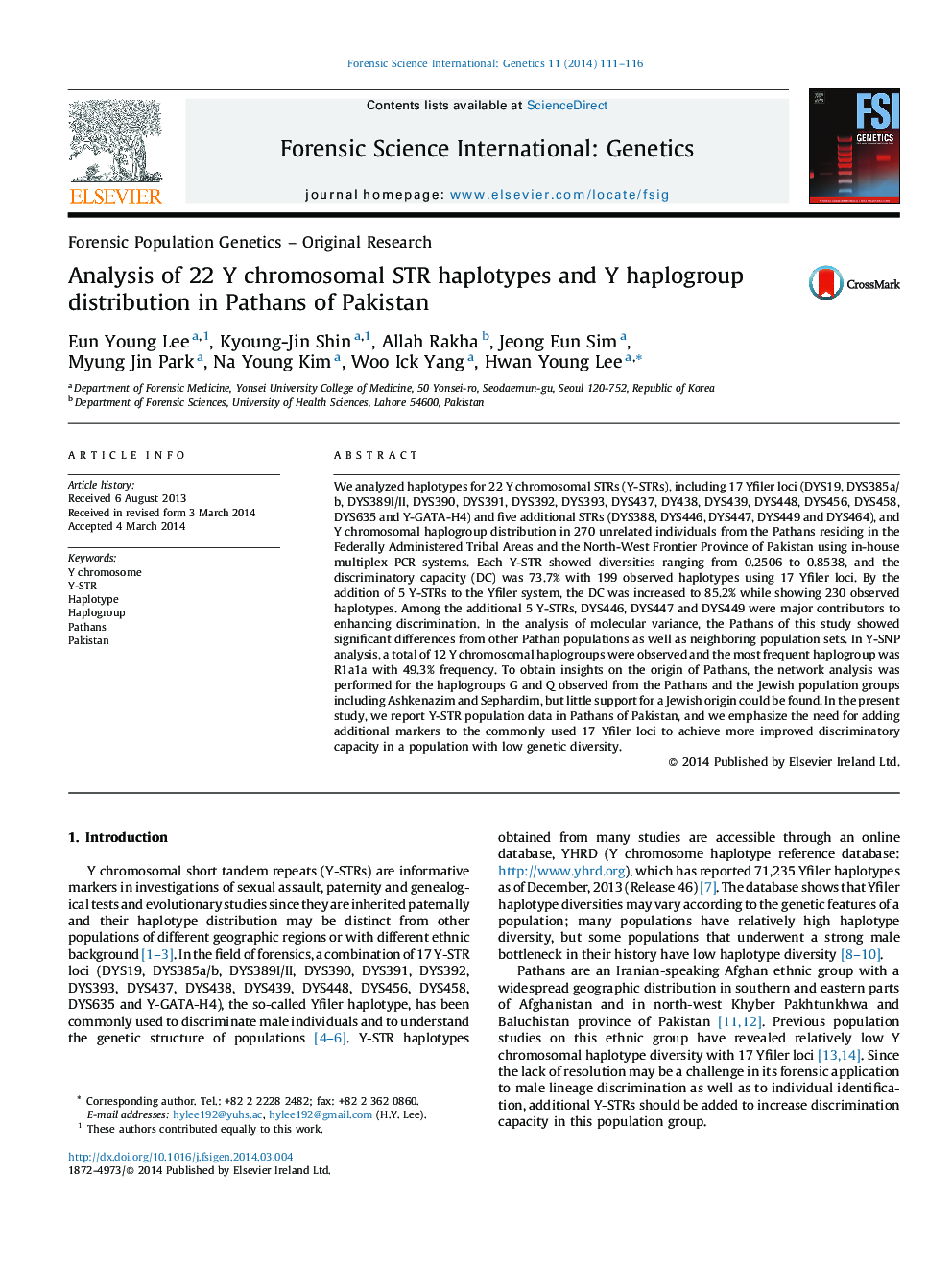| Article ID | Journal | Published Year | Pages | File Type |
|---|---|---|---|---|
| 6554101 | Forensic Science International: Genetics | 2014 | 6 Pages |
Abstract
We analyzed haplotypes for 22 Y chromosomal STRs (Y-STRs), including 17 Yfiler loci (DYS19, DYS385a/b, DYS389I/II, DYS390, DYS391, DYS392, DYS393, DYS437, DY438, DYS439, DYS448, DYS456, DYS458, DYS635 and Y-GATA-H4) and five additional STRs (DYS388, DYS446, DYS447, DYS449 and DYS464), and Y chromosomal haplogroup distribution in 270 unrelated individuals from the Pathans residing in the Federally Administered Tribal Areas and the North-West Frontier Province of Pakistan using in-house multiplex PCR systems. Each Y-STR showed diversities ranging from 0.2506 to 0.8538, and the discriminatory capacity (DC) was 73.7% with 199 observed haplotypes using 17 Yfiler loci. By the addition of 5 Y-STRs to the Yfiler system, the DC was increased to 85.2% while showing 230 observed haplotypes. Among the additional 5 Y-STRs, DYS446, DYS447 and DYS449 were major contributors to enhancing discrimination. In the analysis of molecular variance, the Pathans of this study showed significant differences from other Pathan populations as well as neighboring population sets. In Y-SNP analysis, a total of 12 Y chromosomal haplogroups were observed and the most frequent haplogroup was R1a1a with 49.3% frequency. To obtain insights on the origin of Pathans, the network analysis was performed for the haplogroups G and Q observed from the Pathans and the Jewish population groups including Ashkenazim and Sephardim, but little support for a Jewish origin could be found. In the present study, we report Y-STR population data in Pathans of Pakistan, and we emphasize the need for adding additional markers to the commonly used 17 Yfiler loci to achieve more improved discriminatory capacity in a population with low genetic diversity.
Related Topics
Life Sciences
Biochemistry, Genetics and Molecular Biology
Genetics
Authors
Eun Young Lee, Kyoung-Jin Shin, Allah Rakha, Jeong Eun Sim, Myung Jin Park, Na Young Kim, Woo Ick Yang, Hwan Young Lee,
